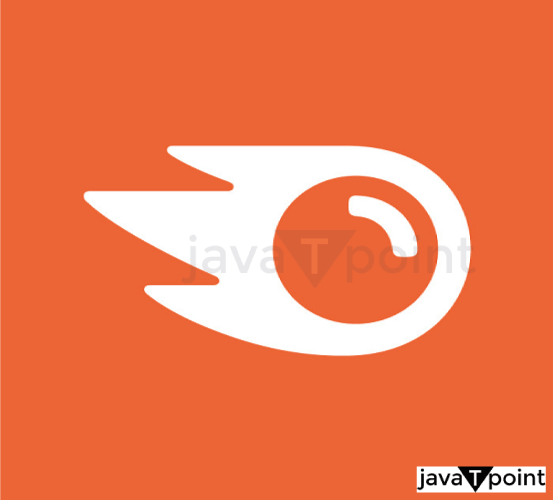Semrush Toolbar
Search Engine optimization (SEO) and Digital Marketing are becoming more and more crucial for organizations as the digital landscape changes. Online success depends on having a high search engine ranking and attracting organic visitors. It can be challenging to keep ahead of the competition, though, with millions of websites fighting for the top slot. The Semrush toolbar is helpful in this situation. The Semrush toolbar is a browser plugin for digital marketers that offers insightful information. It is an effective tool that can support a variety of tasks, including backlink analysis, competition analysis, and keyword research. This post will thoroughly explain the Semrush toolbar's functions and how to utilize it.

What is the Semrush Toolbar?
Users may carry out several SEO and digital marketing tasks right from their browser by using the free semrush toolbar. It may be downloaded from the semrush website and is compatible with Mozilla Firefox and Google Chrome. The toolbar offers several tools that assist digital marketers in search engine optimization, competitive analysis, and area enhancement. Users of the Semrush toolbar can:
- Analyze the domain authority and backlinks of any website.
- Identify the keywords for which website is ranking, and their search volume.
- View the organic search results for any keyword and identify the top-ranking websites.
- Analyze the on-page SEO factors of any website.
- Identify the top-performing pages on any website.
- Analyze the Google Ads campaigns of any website.
- Identify the social media engagement of any website.
The Semrush toolbar is valuable for digital marketers since it makes acquiring information simple and quick. It benefits anyone just getting started with SEO and looking for direction on where to concentrate their efforts.
What do You Mean by Toolbar?
A toolbar in a Chrome extension often refers to an element that the extension adds to the browser's user interface. It can give immediate access to the extension's features or capabilities. Toolbars may be added to the browser in several ways using Chrome extensions. For instance, an extension may add a toolbar at the top of the browser window or one that pops up when a user clicks on an icon in the browser's toolbar area.
How to Install Semrush Toolbar
The semrush toolbar installation procedure is simple. It may be downloaded from the semrush website and is compatible with Mozilla Firefox and Google Chrome.
To Install Semrush Toolbar, Follow these Steps
- Go to the semrush website and click the "semrush Toolbar" tab in the main menu.
- Select your browser (Google Chrome or Mozilla Firefox) and click the "Install Now" button.
- Follow the on-screen instructions to install the toolbar.
- Once the installation is complete, the semrush Toolbar icon will appear in your browser.
Using Semrush Toolbar for Keyword Research
Keyword research is an essential part of SEO and digital marketing. It comprises identifying the search terms visitors use and then optimizing the content of your website to show up for them. Choosing the best keywords to target is essential to succeed with search engine optimization (SEO). A browser plugin called the semrush toolbar offers a plethora of knowledge about keywords and their ability to rank in Search engine results pages (SERPs). The following features of the Semrush toolbar can help with keyword research:
- Keyword Difficulty: The keyword difficulty meter aids content producers and SEO experts determine how challenging it will be to rank for a particular keyword or phrase. Higher scores indicate more difficulty. The keyword difficulty score has a range of 0 to 100. The number of websites currently ranking for a word, the quality of the backlink profiles of those websites, and how competitive the term's search landscape are all elements that affect a keyword's difficulty score. Ranking for a keyword will be more challenging with a higher difficulty score. A quick and straightforward approach to verify the keyword difficulty score of a particular term is using the SEMrush Toolbar. Users may view a term's keyword difficulty score and other important information by typing it into the Semrush toolbar.

- Related Keywords: Related keywords are words or phrases connected to a particular word or phrase. By using similar keywords, you may boost the relevancy of your material and therefore raise the likelihood that it will appear in search results. For each given term, Semrush toolbar offers a list of similar keywords. These connected keywords aid content producers in broadening their keyword research and discover new chances to target pertinent keywords.
- Keyword Search Volume: The frequency with which a specific term is searched over time-typically monthly-is known as the keyword search volume. This indicator is crucial for comprehending a keyword's popularity and the amount of potential traffic it may send to a website. Semrush toolbar may easily find popular keywords worth focusing on by using the information on keyword search volume made available to them. Based on the number of each term's searches, this information can also assist content producers in prioritizing their keyword-targeting efforts.
- Organic Search Results: According to their authority and relevance, organic search results are the unpaid search results that appear on search engine results pages (SERPs). The search engine's algorithms, which consider keyword relevance, website authority, and user experience, determine the order of organic search results. Users of the Semrush Toolbar may learn more about the organic search results for any particular term. Users may learn more about the competition for a specific time and discover what kinds of content are presently ranking for it by examining the organic search results.
Using Semrush Toolbar for Competitive Analysis
For competition analysis, a Semrush toolbar is an effective tool. It is a web-based program that offers users a thorough overview of the performance of their website as well as the performance of their rivals. It enables marketers to track down and examine the keywords rivals use and the backlinks they create. The semrush Toolbar also analyses these links' quality and the market's overall level of competition.
The Semrush toolbar's main advantage is its clear and complete perspective of the competitive environment. It enables marketers to recognize their rivals and quickly track their success. Additionally, it allows marketers to assess the quantity and calibre of backlinks created by enemies and the level of industry competition. With this knowledge, marketers better position themselves in the market and comprehend the entire strategy of their rivals.
Semrush toolbar may be used to find and examine individual keywords and give an overview of the competitive environment. Marketers may use the toolbar to determine their rivals' keywords and how many people search for them. With this knowledge, marketers may create a keyword strategy to set their website and content apart from their rivals. The toolbar may also be used to find hyperlinks that competitors have made. The competition's link-building strategy can be understood and analyzed using this information, and you can also use it to find chances for your backlinks.
Marketers may examine rival performance over time with the Semrush toolbar. This may be utilized to spot patterns in the competitive environment, such as when rivals focus on particular keywords or construct backlinks. Both current campaigns and plans and tactics may be modified using this knowledge. Semrush toolbar may also track a specific website's performance. It summarizes the website's performance, including organic search engine ranks, the number of backlinks created, and the number of targeted keywords. This data may be used to pinpoint areas needing improvement and gauge how well any changes are working.

What is Competitive Analysis?
Analyzing a business's competitive environment is known as competitive analysis. It entails investigating, recognizing, and implementing strategies to take advantage of the advantages and disadvantages of rivals operating in the same industry. Companies may position themselves in the market and comprehend the competitive landscape with the aid of this study.
- A thorough examination of the competitive environment, including the tactics used by current rivals, possible newcomers to the market, and any potential alternative products, is required for competitive analysis. It also entails a study of the company's and its rivals' current and upcoming competitive strategies.
- Any company that wishes to succeed in the market and remain competitive must do a competitive study. It aids businesses in seeing prospective opportunities and risks so they can create plans to seize them. Understanding the competitive dynamics of the market and developing tactics to set one's goods or services apart from those of rivals are also helpful.
- The competitive analysis uses a range of strategies and procedures. Analyzing the competitive environment, investigating the goods and services of rivals, examining their pricing and marketing tactics, and conducting consumer surveys are a few of these. Businesses frequently analyze the competition to understand their target market better and create powerful marketing and promotion strategies.
- The success of every firm is heavily dependent on competitive analysis. Companies that comprehend the industry's competitive landscape and create strategies to take advantage of their strengths and shortcomings frequently have an advantage over rivals.
- The competitive analysis may also be utilized to find future market possibilities to boost earnings and obtain a competitive edge for the company. Competitive analysis is a tool that businesses use to find prospective risks that could affect their performance.
- The competitive analysis enables businesses to make better-informed choices regarding their goods, services, prices, and marketing tactics. They may use it to create engaging and successful customer retention strategies by better understanding their existing and future consumers. A crucial component of every company's success in the market is competitive analysis.
Semrush Toolbar Features
The abundance of options and functions offered by the Semrush toolbar is among its key advantages. Here, we'll look at some of the most practical semrush toolbar features and how they might benefit users' SEO efforts.
- Review of the Domain: The Semrush Toolbar's Domain Overview option is arguably its most used function. It offers customers a quick and straightforward method to examine essential website data, such as the volume of organic search traffic, the number of backlinks, and the most popular organic search terms. Using this data, users may learn more about their website's performance and that of their rivals.

- Organic Study: Users may check a website's organic search terms and current SERP positions by selecting the Organic Research option. Finding high-performing keywords and tailoring content to them can benefit greatly from this knowledge.
- Backlinks: Users may access information about a website's backlink profile, including the number of backlinks, the sites connecting to the website, and the anchor text used in those connections, by selecting the Backlinks option. Users may locate high-quality backlinks and possible link-building possibilities using this data.
- Keyword Compatibility: Users can assess the difficulty of ranking for a particular term using the Difficulty option. Based on the number of websites presently ranking for that term, their domain authority, and other parameters, it produces a score ranging from 0 to 100. Finding low-competition keywords that are possible to rank for using this information might be especially helpful.
- Site Audit: Users may quickly and easily conduct on-page SEO audits of any webpage using the Site Audit feature. It can identify mistakes and problems with header tags, meta tags, and other crucial on-page elements that may influence a page's search engine results. With this knowledge, users can immediately see and resolve on-page SEO problems.
- Page Evaluation: Users may get a comprehensive analysis of every website they visit using the Page Analysis feature. It offers details on the title tag, meta description, header tags, and other significant on-page elements of the webpage. Users may utilize this information to find on-page SEO possibilities and improve the search engine optimization of their websites.
- Magic Keyword Tool: Users can access a comprehensive keyword research tool with the Keyword Magic Tool option. Users may input a seed term to get a list of similar keywords and essential metrics like search volume, competitiveness, and CPC information. Users may utilize this data to find high-performing keywords and target those keywords in their content by optimizing them.
|




 For Videos Join Our Youtube Channel: Join Now
For Videos Join Our Youtube Channel: Join Now









